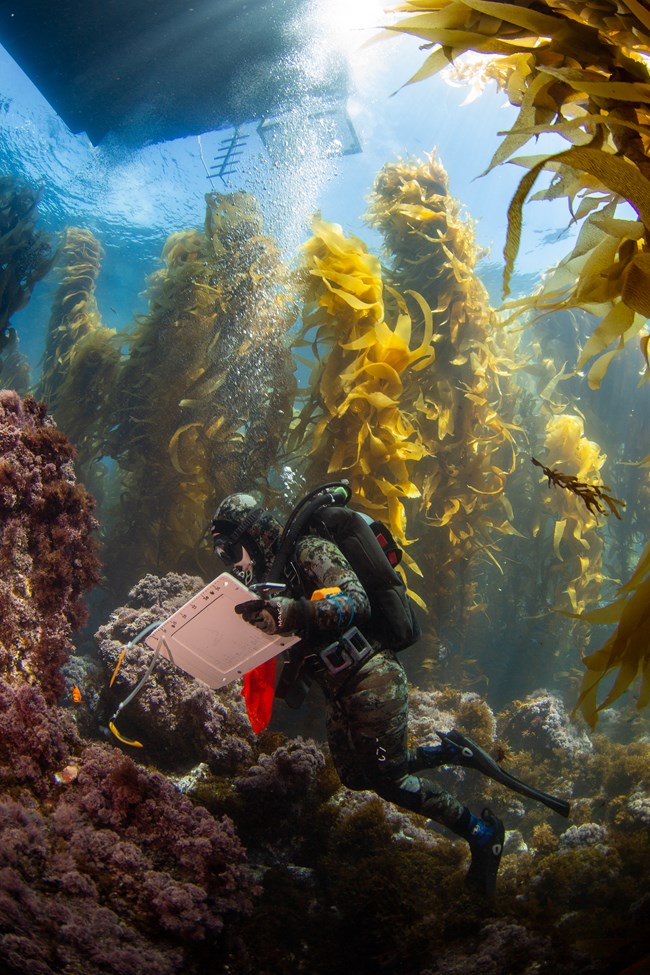
NPS / Scott Gabara
Why We Care
The nearshore waters along the coastline southern California host one of the most productive marine ecosystems on earth, giant kelp forests (Macrocystis pyrifera). Like tropical rainforests, these towering seaweeds provide structure, food, and hiding places for more than 1,000 species of plants and animals, providing necessary habitat for species as diverse as giant black sea bass and tiny bluebanded gobies.
Kelp forests are influenced by both natural events and human activities. Strong storms associated with El Niño years and fluctuating water temperatures can cause dramatic changes in kelp forest communities. Human activities also affect the health and survival of kelp forests through coastal development, sedimentation, pollution, and, in particular, fishing. Removal of predators can alter predator-prey interactions. For example,with the elimination of sea otters and the overharvesting of spiny lobster and California sheephead, herbivore populations like purple sea urchins can decimate kelp beds through overgrazing. These areas quickly transition into "barren" landscapes supporting relatively few species and lower biomass. Loss of kelp beds also eliminates nursery grounds for many species whose young live in the kelp until they are large enough to venture into open waters. Without shelter and food from the kelp forest, these populations may be dramatically reduced.
How We Monitor
The Kelp Forest Monitoring Program was established by Channel Islands National Park in 1982 to collect baseline information about the kelp forest ecosystem in the Park. Each year the program collects size and abundance data for 70 categories (taxa) of algae, invertebrates, and fish that are indicators of ecosystem health. The current monitoring protocol was adopted in 1997.

NPS / Scott Gabara

NPS / Scott Gabara
Last updated: December 1, 2023
